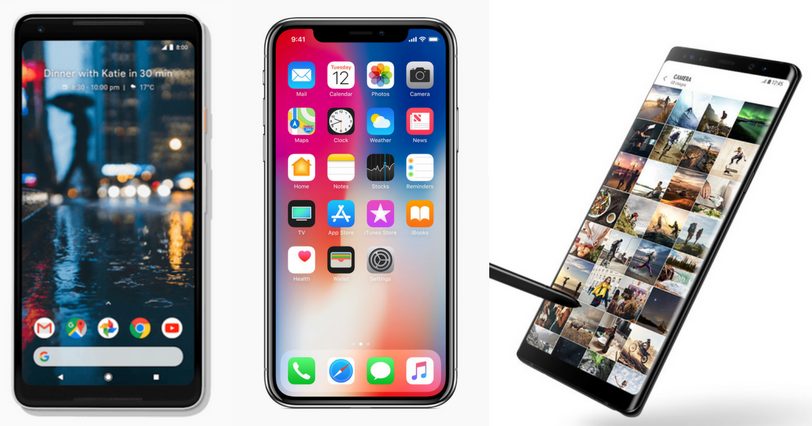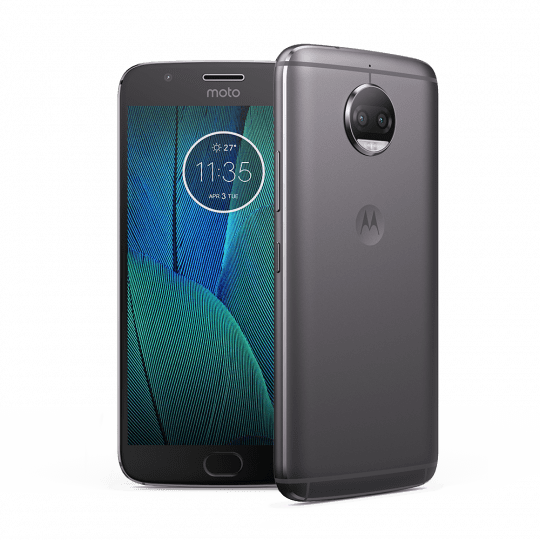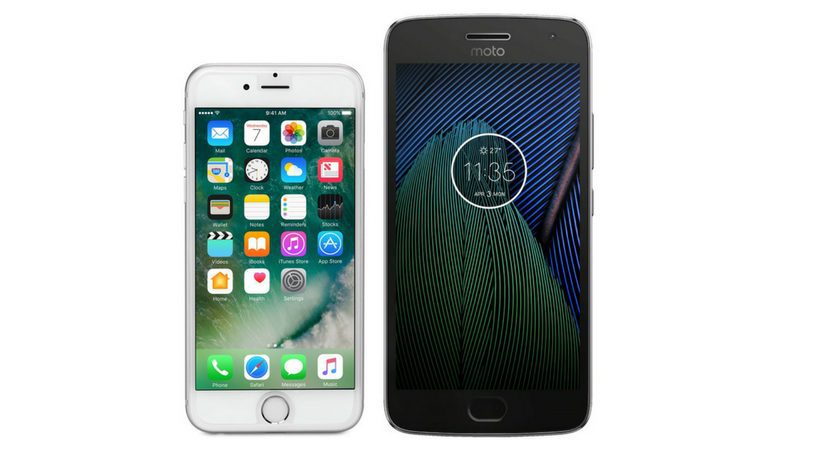On most weekday mornings, I get a coffee on my way to my office. The barista knows how I like my drinks. My flat whites and lattes with one sugar. My hot chocolate extra hot. My chai lattes extra spicy. Usually small, occasionally medium. Because of my hot beverage infidelity, he waits until I place my order before making my drink.
I’m equally unfaithful when it comes to my tech. Over the last six years, I’ve owned a Windows desktop and laptop, an iMac, an old laptop running Linux, a Google Nexus tablet, an iPad, two iPhones, two Kindles, and one Google Home Mini. I’ve never belonged to any fandom; I enjoy all my devices.
My first smartphone was an iPhone 4. My second was an iPhone 6, the 128GB model, which I bought about two years ago, for $1129 AUD. It was more pleasant to use than the 4 – slimmer, lighter, faster, and a little larger. But it never felt as stable and the battery life was terrible. By midday, I was low on juice. I never went anywhere without a portable battery and it was always plugged in if I was at a computer. I bought the 6 because the 6 Plus had felt too big in my hand, but the way I use my smartphone changed over the year. Even though it was larger than the 4, the 6 began to feel too small. I decided my next smartphone would be a bigger model.
I got excited when September rolled around. This is when Apple held its annual keynote event. I wasn’t sure if I’d be upgrading my smartphone in the following months, but I was excited to see what Apple would introduce. I was a little disappointed.
Apple’s iPhone 8, 8 Plus, and X
Apple unveiled three new phones: iPhone 8, iPhone 8 Plus, and iPhone X.
- The iPhone 8 64 GB is $1079 AUD. The 256 GB is $1329 AUD.
- The iPhone 8 Plus 64 GB is $1229 AUD. The 256 GB is $1479 AUD.
- The iPhone X 64 GB is $1579 AUD. The 256 GB is $1829 AUD.
There isn’t a big difference in price between the 8 and the 8 Plus and between the 8 Plus and X. That was deliberate and designed to compel you to spend just a few hundred dollars more for a better smartphone. I knew I wanted a larger phone. Although the X was smaller than the 8 Plus, the X has a larger screen in a more compact package. If I was going to upgrade my iPhone, it was going to be to the 64 GB iPhone X. But I wasn’t entirely sold on it.
When I held them in my hands, I was drawn to the 8 Plus in rose gold. It’s a beautiful phone, but it felt like an aesthetic upgrade rather than a functional one. Although the X introduced new features to Apple’s lineup, it mostly just brought the phone up to date with other smartphones. It’s sleek and modern, but bezel-less design, wireless charging, and facial recognition have been available in other phones for years. And Animoji wasn’t the feature that was going to convince me to part with $1500+. I wanted my next phone to be more than just a beautiful phone. Actually, I don’t even care if it’s not that beautiful. I wanted fewer bells and whistles and solid basics like a headphone jack and a longer battery life in a phone I’m not afraid of dropping. I wanted a phone that helps me solve problems.

I thought I’d stick with my 6 for another year, but I was getting tired of the crashes and dud battery. Apple stopped support for the 4, which my mother inherited, so she needed a new smartphone. Since she only uses about five apps, I thought the 6 could work well for her with a factory reset and a new battery. But I would not be getting an iPhone for myself. I started exploring other options. I immediately ruled out Samsung. The Galaxy Note 8 and Galaxy S8 are fantastic smartphones, but I don’t like the way the surface flows over the edges.
Google Pixel 2
I was smitten by the Google Pixel 2 XL. I liked Active Edge (the squeeze functionality to access features) and Now Playing (the song identification feature). It also has the best camera on the smartphone market. My smartphone has replaced my camera on a daily basis so this is a spec that I look at. But the Pixel got my attention for a couple of other reasons.
First, although I like Apple hardware, I was using Google products. I like Gmail, Drive, Calendar, YouTube Red, and I have a Google Home Mini. A Pixel made sense in terms of seamless integration. This is what I mean about a smartphone that helps me solve problems, that is a computational device, and not just a luxury brand and lifestyle phone. Apple has smart home technology too, but it isn’t in the same ballpark as Amazon and Google. I’ve always found Siri more entertaining than useful.
Second, I loved the clean design and basic operating system (referred to as stock Android). The Pixel gets the first Android updates so not only do you experience new features first, it’s the safest Android phone. Other manufacturers may take months to update their Android models. If you place two Android smartphones side by side, you’ll see they’re different. Android is open source and free for manufacturers to use. Smartphone companies like HTC, Samsung, Sony, LG and Motorola alter aspects of the user interface to give their users a unique Android experience. When Google releases an update to Android, these companies may need to update their skins, which takes time and delays the release of the update. This leads people to erroneously believe that Android phones are insecure while iPhones can’t be hacked.
The ethics of smartphones
The 64 GB Google Pixel 2 XL costs $1400 AUD. I’d spent $1129 on my iPhone 6 so it wasn’t that I was unwilling to spending $1k+ on a smartphone, but I felt that, if I was going to, I wanted noticeably top notch performance in a phone that was going to last more than two years. The idea that I should be shelling out this much money for a phone each year is absurd to me. I couldn’t help but reflect on this and not only on the impact on my pocketbook, but also on the ethics of smartphones as well as how I use my phone.
Smartphones are powerful mini-computers and, for many, have become necessities. But a $1k+ smartphone reeks of privilege and vanity. There’s not a lot that a $1k+ smartphone does that a budget smartphone doesn’t. I wasn’t using my $1100 iPhone for life and death matters. I was using it primarily to read and write a little, chat with family and friends, snap and share photos, and watch videos.
I also grew resentful of planned obsolescence, products being created to need replacement after a finite amount of time in order to keep sales going. Further, the smartphone supply chain is full of social injustice and environmental destruction. I know many people don’t care about these things, but I do. Although there’s not a lot we can do about it, resisting the urge to buy a flagship smartphone every year, or even every two years, is something I can do.
So, I said no to Apple and Samsung and Google. I looked at HTC, LG, Huawei, and Oppo phones. They all make fine phones, but I didn’t fall in love with anything. I looked at the Razer, which has a huge battery life as it was designed for gamers, but it came at the cost of a good camera, which is more important to me. I came close to buying a OnePlus 5T. It’s an excellent phone that comes close to stock Android, has a solid camera, and retails for $500-550 USD. It outperforms its competition and even flagships in some ways, but I was disappointed by the Chinese company’s data collection practices and its failure to include the Australian market. In the end, I bought a Moto G5S Plus.

Moto G5S Plus
It’s not fair to compare a $400 AUD smartphone to a $1k+ one (I know people will anyway). A flagship phone like the iPhone X or the Google Pixel 2 is a better phone objectively. You can see it in the design, materials, and specs. But the Moto G5S Plus is good enough for me. It can do all the things I need it to do. Here are the features I like:
- An all-metal unibody design (many mid-range phones have a plastic body).
- A fast-charging 3,000mAh battery. I can go almost four days without charging it. I know that won’t last forever, but I’m loving it right now.
- 3GB RAM.
- 32 GB internal, up to 128 GB microSD Card support.
- Dual SIM. I love this because it means I won’t have to replace my SIM card when I travel to the US.
- A very snappy Snapdragon 625 processor.
- Android 7.1.1, Nougat.
- Headphone jack.
- Fingerprint reader.
- Near stock Android.
- Moto Actions. These are tasks associated with gestures. For example, twisting your wrist twice opens the camera. A chopping action turns the flashlight on and off. Placing the phone face down silences notifications and calls.
- Integration with all my other Google products.
- A good camera.

Notice I didn’t say an excellent camera. The quality of my photos with the 6 has declined, but in good natural light, my two-year old iPhone takes sharper photos than my new Moto. Of course, the camera of any flagship phone would blow it out of the water. For me, that’s the Moto’s only weakness, but it is, after all, a mid-range phone, and the camera is still good enough.
The Moto G5S Plus not fully waterproof, but it has a water repelling nano coating. So, splashes are okay, but don’t drop it in the toilet. And it is bigger than my 6, but it still feels good in my hand. The trend in high-end smartphones is slim and light, but the heftiness of the Moto G5S Plus is a nice change.

Moving from my iPhone 6 to the Moto G5S Plus was easy. It took seconds to log into my Google account and then everything was there – Gmail, Calendar, Drive, etc. It took a little longer to download my favourite apps and log into those accounts. It took much longer to subscribe to all my favourite podcasts. All up, the setup took about two hours. There were three hiccups.
- The first one is years of music I’ve purchased via iTunes. Eventually, I’ll move these to Google Play. These days, I use Spotify so I’m not in a hurry to do this.
- The second one is photos. This wasn’t a big deal either because I keep very few photos on my iPhone. I’ll create a few albums on Google Photos and use that instead.
- The third one is that even after removing my sim card from the iPhone, I received messages there. I soon realised I was getting Android messages on my Moto and iMessages on my iPhone. Turning off iMessages solved that.
There’s no such thing as a perfect phone or a best phone. There’s design, features, specs, and cost. You need to decide what you want in your smartphone and buy the best phone for you. It’s also worth thinking about how deeply you live in Apple’s or Google’s ecosystem. I live comfortably in both so this didn’t impact my decision. I may buy an iPhone again someday, but for now I’m happy with a simple workhorse.

